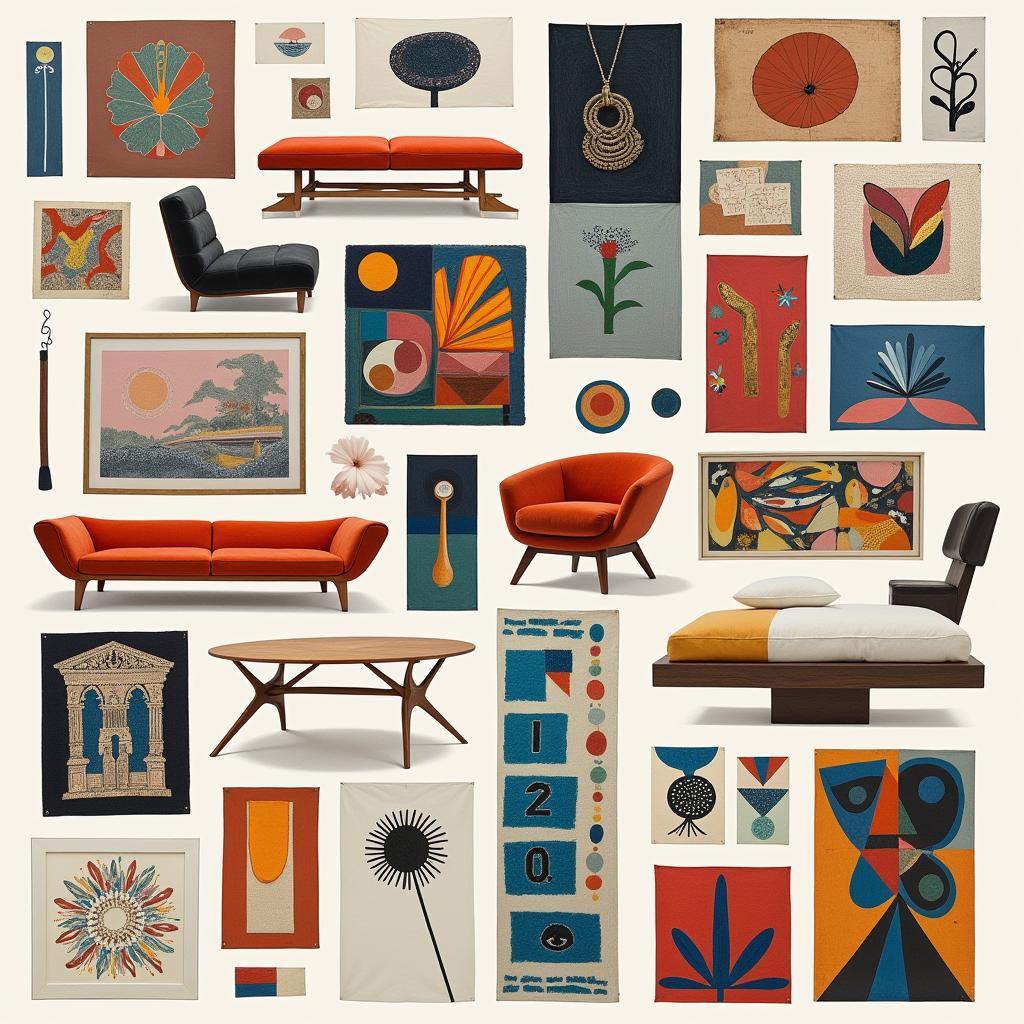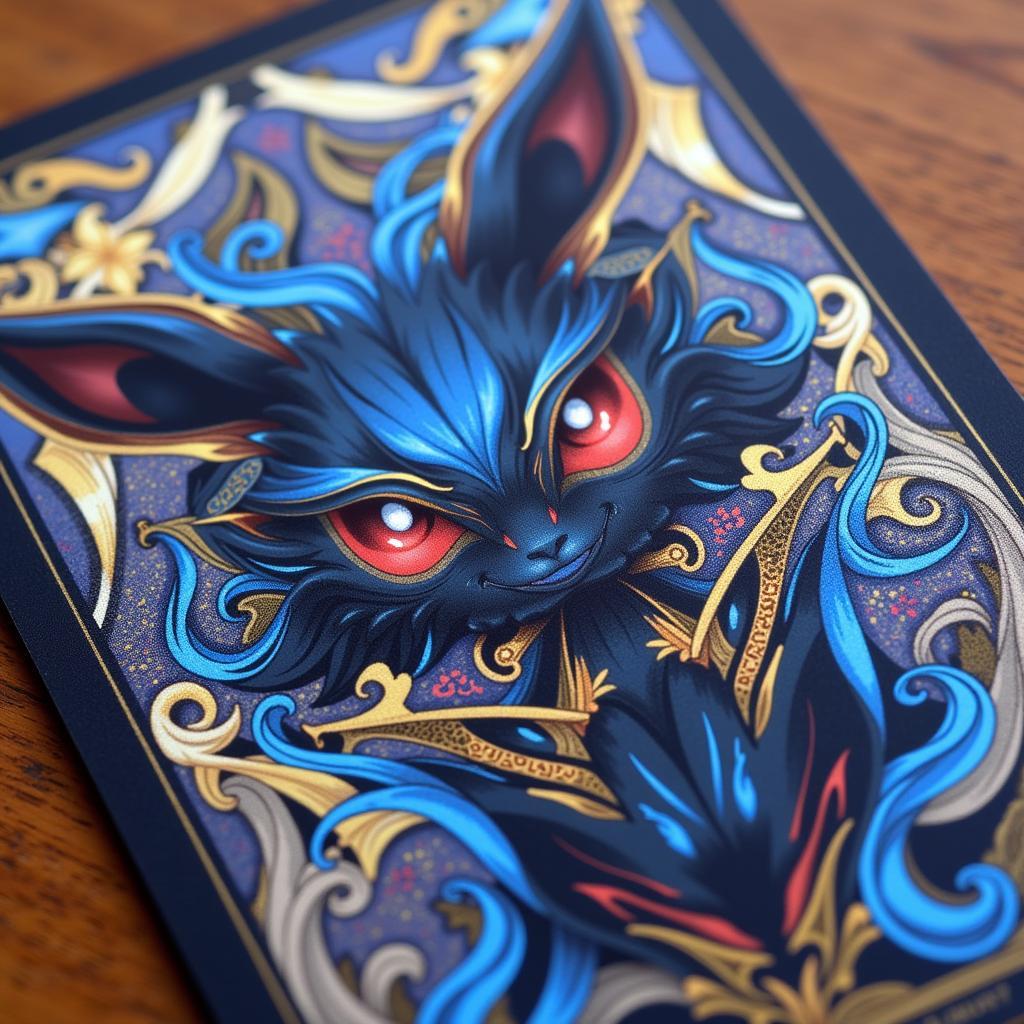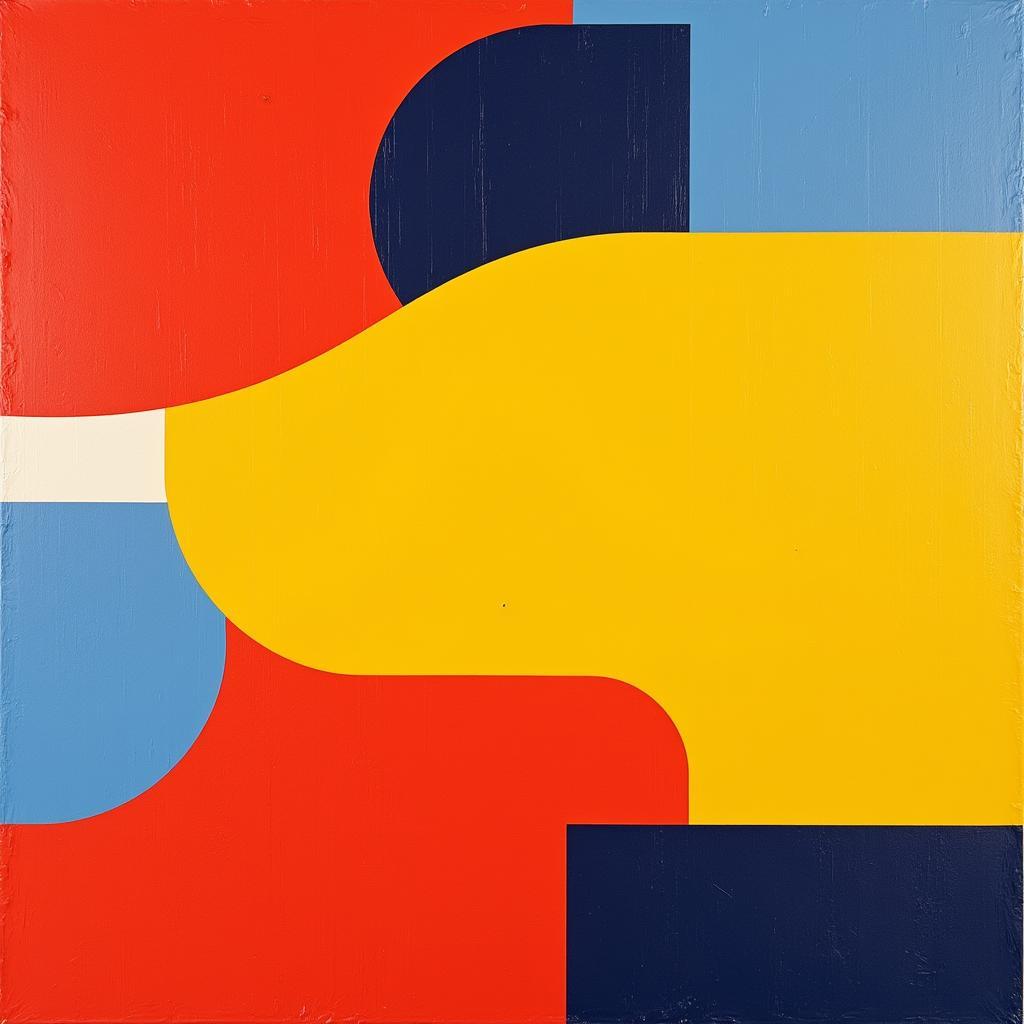Exploring the Depths of Abstract Modern Art Paintings
Abstract Modern Art Paintings represent a fascinating departure from traditional art forms, focusing on the use of form, color, and composition to evoke emotions and ideas rather than representational imagery. The movement, emerging in the early 20th century, revolutionized the art world and continues to captivate audiences today. This article delves into the captivating world of abstract art, exploring its history, key characteristics, and enduring influence. Just after the rise of abstract art, many other art forms have also risen in popularity, for example, you can see modern simple art.
A Brief History of Abstract Modern Art Paintings
The roots of abstract art can be traced to various artistic and intellectual movements of the late 19th and early 20th centuries. Post-Impressionism, with its emphasis on subjective expression, paved the way for artists to explore non-representational forms. The rise of Cubism, with its fragmented perspectives and geometric shapes, further challenged the traditional notions of representation. Artists like Wassily Kandinsky and Piet Mondrian are considered pioneers of abstract art, pushing the boundaries of artistic expression and laying the foundation for future generations of abstract artists.
Key Characteristics of Abstract Art
Abstract art is characterized by its departure from realistic depiction. Instead of portraying recognizable objects or scenes, it focuses on the use of abstract elements such as:
- Color: Color plays a crucial role in abstract art, evoking emotions and creating visual impact.
- Form: Geometric shapes, organic forms, and lines are used to create dynamic compositions.
- Texture: The use of different textures can add depth and interest to abstract artworks.
- Composition: The arrangement of elements within the artwork is carefully considered to create balance and visual harmony.
Abstract art invites viewers to interpret the artwork based on their own experiences and perspectives. This subjective interpretation is a defining characteristic of the movement.
 Abstract Modern Art Paintings: Exploring Color and Form
Abstract Modern Art Paintings: Exploring Color and Form
Different Styles within Abstract Art
Within the broad umbrella of abstract art, numerous distinct styles have emerged, each with its own unique characteristics and approach to abstraction. Some notable examples include:
- Abstract Expressionism: Characterized by gestural brushstrokes and an emphasis on emotional expression.
- Cubism: Employing fragmented perspectives and geometric shapes to represent objects.
- Surrealism: Exploring the realm of dreams and the subconscious through abstract imagery.
- Minimalism: Striving for simplicity and reducing art to its essential elements.
- Geometric Abstraction: Focusing on the use of precise geometric shapes and lines.
Understanding these different styles provides a deeper appreciation for the diversity and complexity within the world of abstract art. Modern abstract art can complement many art decor styles, for example, art for dark walls.
The Impact of Abstract Modern Art Paintings
Abstract art has had a profound impact on the art world and beyond. It has influenced other art forms such as design, architecture, and fashion. Its focus on subjective interpretation and emotional expression has opened up new avenues for artistic exploration and challenged traditional notions of beauty and aesthetics. The popularity of abstract art continues to this day, and you can find modern art abstract paintings for sale online and in galleries.
 The Influence of Abstract Modern Art on Design
The Influence of Abstract Modern Art on Design
Why Do People Appreciate Abstract Modern Art?
What draws people to abstract modern art paintings? The answer lies in its ability to evoke emotions, stimulate the imagination, and challenge conventional ways of seeing the world. Abstract art offers a unique and personal experience, allowing viewers to connect with the artwork on an individual level. It encourages contemplation and dialogue, fostering a deeper engagement with art.
John Davies, a renowned art critic, states, “Abstract art isn’t about what you see, but what you feel. It’s a conversation between the canvas and your soul.” This quote captures the essence of abstract art’s appeal, emphasizing its ability to connect with viewers on a deeper emotional level.
How to Interpret Abstract Art
There’s no single “right” way to interpret abstract art. The beauty of it lies in its subjectivity. However, there are some approaches that can enhance your understanding and appreciation:
- Consider the elements of art: Pay attention to the use of color, form, texture, and composition.
- Think about the artist’s intentions: Research the artist’s background and artistic philosophy.
- Reflect on your own emotions and experiences: Allow the artwork to evoke personal feelings and associations.
Conclusion
Abstract modern art paintings continue to fascinate and inspire, offering a unique and powerful form of artistic expression. By understanding its history, characteristics, and various styles, we can deepen our appreciation for this transformative movement and connect with the profound emotions and ideas it conveys. You can find beautiful pieces of capri wall art or even irish landscape art. Abstract art invites us to see the world through a different lens, embracing the power of abstraction to unlock new realms of artistic possibility.
FAQ
- What is the difference between abstract and non-objective art?
- Who are some of the most famous abstract artists?
- Where can I see abstract modern art paintings?
- How can I start collecting abstract art?
- What is the value of abstract art?
- How do I choose the right abstract art for my home?
- How is abstract art made?
If you need assistance, please contact us at Phone Number: 02462573573, Email: danteum@gmail.com or visit us at Savico Megamall, 7-9 Nguyễn Văn Linh Street, Gia Thụy Ward, Long Biên District, Hanoi 10000, Vietnam. We have a 24/7 customer service team.

